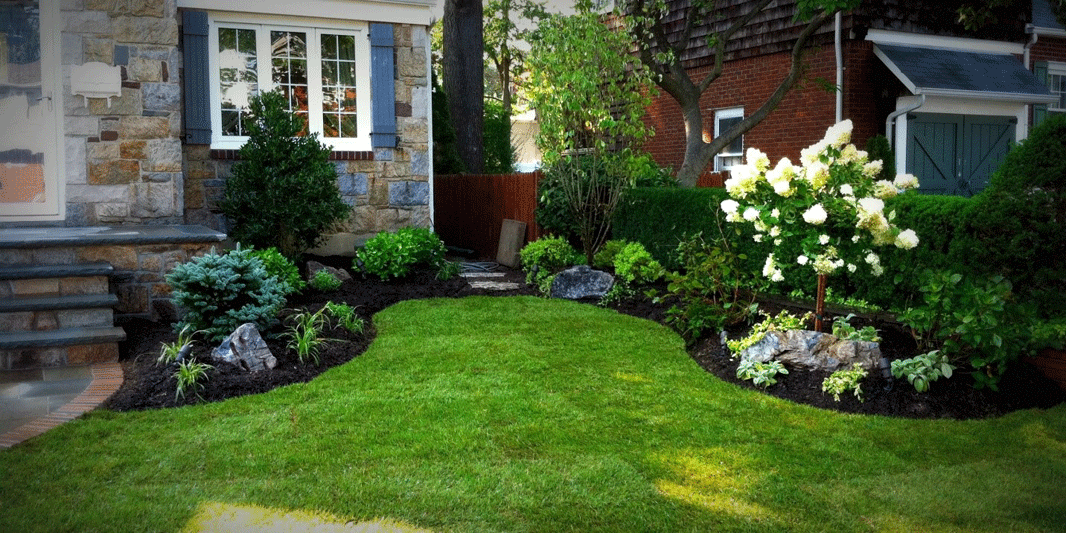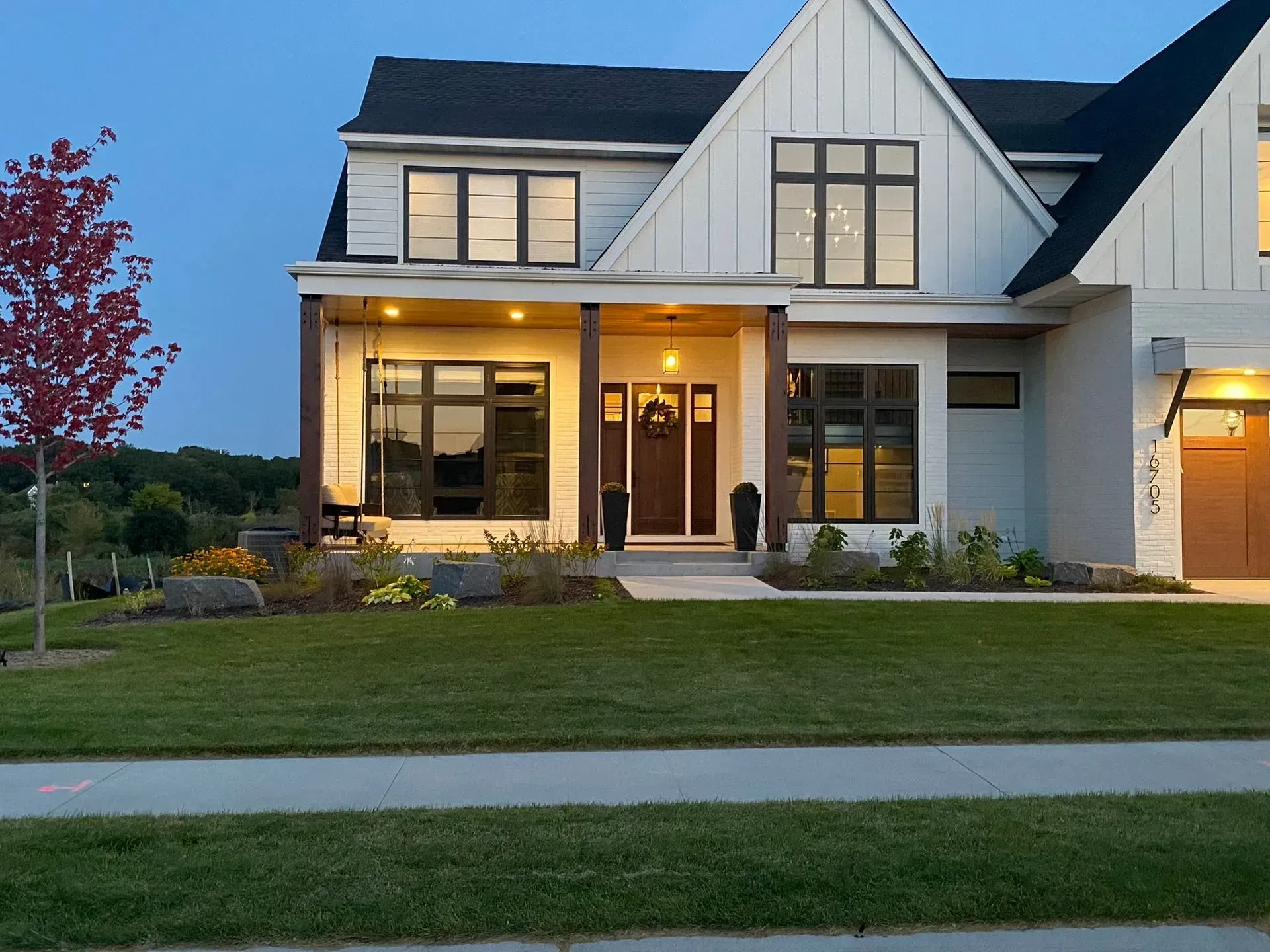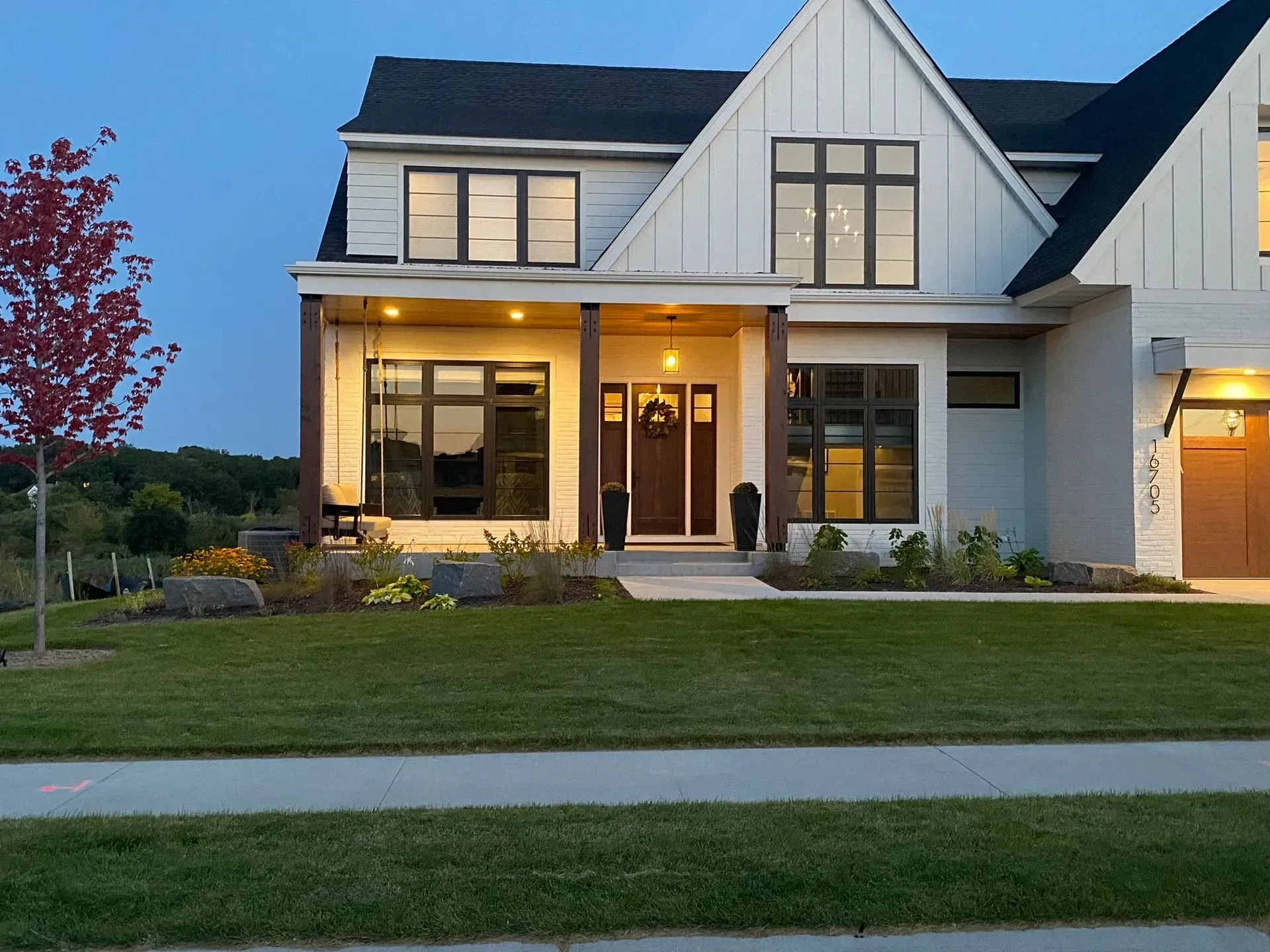A Seasonal Guide to Fertilizer and Weed Control in Minneapolis
Healthy Lawns Follow the Seasons, Not the Bag

When most Minneapolis homeowners think about fertilizing their lawns, they imagine walking into the hardware store, grabbing a bag with bright packaging, and spreading it across the yard. The assumption is that the brand or the “organic” label determines success. In reality, the key to healthy, weed-free turf has little to do with what the bag says and everything to do with when and how those nutrients are applied.
Lawns are living systems that follow natural cycles. In the Midwest, cool-season grasses respond differently in spring, summer, fall, and winter. They grow aggressively in cool weather, struggle in the heat, and store energy before going dormant. Fertilizer and weed control programs only work when they sync with these cycles. That’s why professional programs outperform DIY. It’s not just about products, it’s about timing, precision, and turf science.
I studied turf science, and that background informs how we design seasonal lawn programs. Treatments are fine-tuned to Minneapolis conditions, not generic schedules pulled from national chains. When done right, fertilizer builds strong roots, weed control prevents invasion, and your lawn becomes a lush, comfortable surface for living. For families, that means a smooth, green space where kids can play, pets can run, and friends can gather without worrying about weeds or brown patches.
The rest of this article walks you through the seasonal schedule that keeps Minneapolis lawns thriving. You’ll see why spring sets the foundation, why summer requires balance, why fall is the “power season,” and why winter is about planning. Along the way, you’ll understand why professional treatments protect not just your lawn but also your time, money, and enjoyment of your property.
Spring: Setting the Foundation
Spring in Minneapolis is a season of optimism. Snow melts, the ground thaws, and lawns wake up. But the first six weeks after thaw are the most critical of the year for turf health. If you get fertilizer and weed control right during this window, you set your lawn up for success all year.
The focus in spring is twofold: stimulating root growth and preventing weeds before they start. Grass roots need balanced nutrients, especially nitrogen, but too much nitrogen too early can cause weak, surge growth that looks green but lacks strength. Professional programs apply the right blend at the right rate, building strength from the roots up.
Weed control in spring is about prevention, not cure. Crabgrass, one of the most aggressive weeds in Minneapolis, germinates once soil temperatures reach about 55 degrees. By the time you see it, it’s too late. That’s why pre-emergent herbicides are timed to the soil, not the calendar. Professionals track temperatures and apply treatments before germination, creating a protective barrier that stops weeds before they appear.
Many DIY homeowners get this wrong by waiting until dandelions appear. At that point, crabgrass is already spreading, and broadleaf weeds are competing with grass. Fixing that mistake often takes the rest of the season. With a professional program, you avoid the cycle of frustration.
In Plymouth, where lawns are larger, coverage is about efficiency. In Minneapolis, where lawns are compact and surrounded by hard surfaces, it’s about precision. Every inch matters because small spaces magnify the impact of weeds. A well-timed professional application prevents crabgrass from overtaking boulevards and backyards before the first barbecue of the season.
Pro Tip: Pre-emergent only works once each season. If you miss the timing, you miss the chance.

Summer: Balancing Growth and Stress
By July, Minneapolis lawns face a different battle. Heat and humidity stress cool-season grasses. Growth slows, color fades, and weeds seize the opportunity to spread. This is the season when many homeowners realize that the “green-up fast” bag from spring has backfired. The lawn is patchy, brittle, and covered with clover and dandelions.
Professional summer programs avoid that trap by applying controlled fertilizer inputs. Instead of flooding the lawn with quick-release nitrogen, professionals use slow-release blends that feed gradually, sustaining health without forcing fragile summer growth. That balance keeps turf resilient during dry spells and prevents disease pressure that thrives on overstimulated grass.
Weed control also shifts focus in summer. Broadleaf weeds like dandelions, plantain, and clover are most active now. Liquid spot treatments target them without harming the surrounding turf. For families, this matters because summer is when lawns are used most. Children run barefoot, pets roam, and outdoor gatherings move onto the grass. A lawn that looks good but feels uneven or full of weeds is a disappointment. Professional treatments ensure the lawn looks lush and performs as a safe, inviting surface for daily life.
This is also the season when organic myths cause problems. Some companies market corn gluten meal or other “natural” products as complete weed control solutions. The reality is they don’t perform at the same level. A few clients request all-organic programs, but most switch back after a season of frustration. A transparent approach that combines low-profile fertilizers with targeted weed control works better and lasts longer.
In Edina, where luxury lawns are maintained for entertaining, summer treatments are especially important. Guests notice brown patches and weed invasion. Professional programs keep these lawns polished for social events.
Pro Tip: Set your mower higher in summer. Taller grass shades soil, keeps it cooler, and naturally suppresses weed growth.

Fall: The Power Season
If spring is about setting the stage, fall is about building strength. Minneapolis lawns do more growing underground in September and October than they do above ground in July. Roots extend deeper into the soil, storing nutrients for winter and spring. Fertilizer applied during this season has the most impact on long-term lawn health.
Professional fall applications deliver balanced nutrients that feed roots, not just blades. They also support overseeding, which is best done when soil is still warm but air temperatures are cool. A thin layer of starter fertilizer helps new seeds germinate and integrate into existing turf. This is the season to thicken lawns, fill in bare spots, and outcompete weeds naturally.
Weed control in fall is also more effective. Broadleaf weeds pull energy down into their roots to prepare for winter. Herbicides applied now travel with that energy, killing weeds more thoroughly than surface-level treatments in spring or summer. That means fewer weeds next year and a cleaner start in spring.
For homeowners, this translates into visible results. A lush fall lawn makes end-of-season gatherings more comfortable and enjoyable. It also sets up a dramatic green-up the following spring, meaning your yard looks like the best on the block before your neighbors even get started.
In Minnetonka, where lakefront lawns deal with erosion and runoff, fall treatments also stabilize turf. Strong roots reduce soil loss and improve water absorption. That protects not only the lawn but also the shoreline.
Pro Tip: Fall fertilizer is like a savings account. It carries your lawn through winter and pays dividends with stronger, greener turf in spring.
Winter and Dormancy: Planning, Not Products
Winter in Minnesota brings snow cover and frozen ground. Once soil temperatures drop below freezing, fertilizer does not work. Applying products at this stage wastes money and creates runoff problems when snow melts. That is why professional programs stop fertilizer applications late fall and shift focus to planning.
Winter is the time to evaluate lawn health, plan overseeding, and schedule next year’s program.
Homeowners who pre-book treatments ensure they are at the top of the list for early spring, which is critical for hitting the pre-emergent window.
For families, winter planning means peace of mind. You don’t have to wonder whether your lawn will bounce back in spring. You know it will because the groundwork has been laid. Professional care means you are not scrambling at the first sign of weeds while neighbors fight losing battles with crabgrass.
In Plymouth, where properties are larger, winter planning also ensures crews can cover every acre efficiently once the season starts. That preparation keeps programs on track even during Minnesota’s unpredictable springs.
Pro Tip: Never apply fertilizer on frozen ground. It will not feed your lawn, and it will wash into storm drains when snow melts.
Why Professional Programs Outperform DIY
At this point, you may be wondering if it is really worth hiring a professional when bags of fertilizer are available at every store. The answer lies in three areas: science, precision, and consistency.
Science matters because turf care is not just about adding nutrients. It is about understanding how soil, water, temperature, and grass varieties interact. I studied turf science, and that knowledge allows us to design programs that respond to Minneapolis conditions, not generic national guidelines.
Precision matters because every lawn is different. Shady boulevards, compacted backyards, and high-traffic play areas all need adjustments. Professionals know how to fine-tune treatments so each part of the lawn gets what it needs.
Consistency matters because lawn health is cumulative. DIY homeowners often apply products too late, too early, or at the wrong rate. Professional programs remove the guesswork. Treatments are scheduled, measured, and adjusted for conditions. That consistency builds stronger turf year after year.
The result is not just a greener lawn. It is a lawn you can enjoy. Families get safe, smooth play areas. Homeowners get outdoor spaces ready for entertaining. And property values rise because curb appeal is real. A professional program pays for itself in both lifestyle and financial return.
Pro Tip: The bag at the store cannot adjust for your soil or timing. A professional program can, and that is the difference between average turf and exceptional lawns.
Image 5: Photo: Minneapolis homeowner enjoying lush green lawn in summer.
(link to internal page on professional lawn programs)
Outbound link: (Consumer Reports – Lawn Care Truths About Fertilizer)
FAQs
Why can’t I just use organic fertilizer for weed-free lawns?
Organic products like turkey feather meal or corn gluten can improve soil health, but they are not strong enough to keep Minneapolis lawns weed-free on their own. Homeowners who go all-organic often face persistent weed problems, especially crabgrass and dandelions. Professional programs balance low-profile, natural inputs with effective weed control, delivering a healthier lawn without compromising results.
What makes professional lawn programs more effective than DIY?
Professional programs are built on turf science. They use slow-release fertilizers, precise timing, and targeted weed control. DIY applications often miss critical windows or apply unevenly. Professionals adjust for your soil, shade, and lawn use, creating consistent results year after year.
How often should fertilizer and weed control treatments be applied?
In Minneapolis, most programs involve four to six seasonal treatments. These align with spring emergence, summer stress, fall growth, and winter prep. Skipping a season weakens the program, while consistent care builds long-term health.
What is the biggest mistake Minneapolis homeowners make with lawn care?
The most common mistake is focusing on appearance in spring and ignoring the rest of the year. That leads to surge growth, summer stress, and fall weakness. Professional programs maintain balance year-round.
Are professional treatments safe for pets and kids?
Yes. Once products are applied and dry, lawns are safe for families and pets. Professionals also know which formulations to use for minimal impact while maximizing effectiveness.
How do seasonal treatments adapt to Minnesota’s climate?
Minnesota’s freeze and thaw cycles demand precise timing. Professionals monitor soil temps, rainfall, and turf growth to apply treatments when they will be most effective. That adaptation is what makes programs work here when generic advice fails.
Can professional programs really reduce weeds long term?
Yes. The key is consistency. Weeds compete best in weak turf. Professional programs strengthen grass so it naturally outcompetes weeds. Over time, fewer weeds appear, and your lawn requires less intervention to stay lush.










